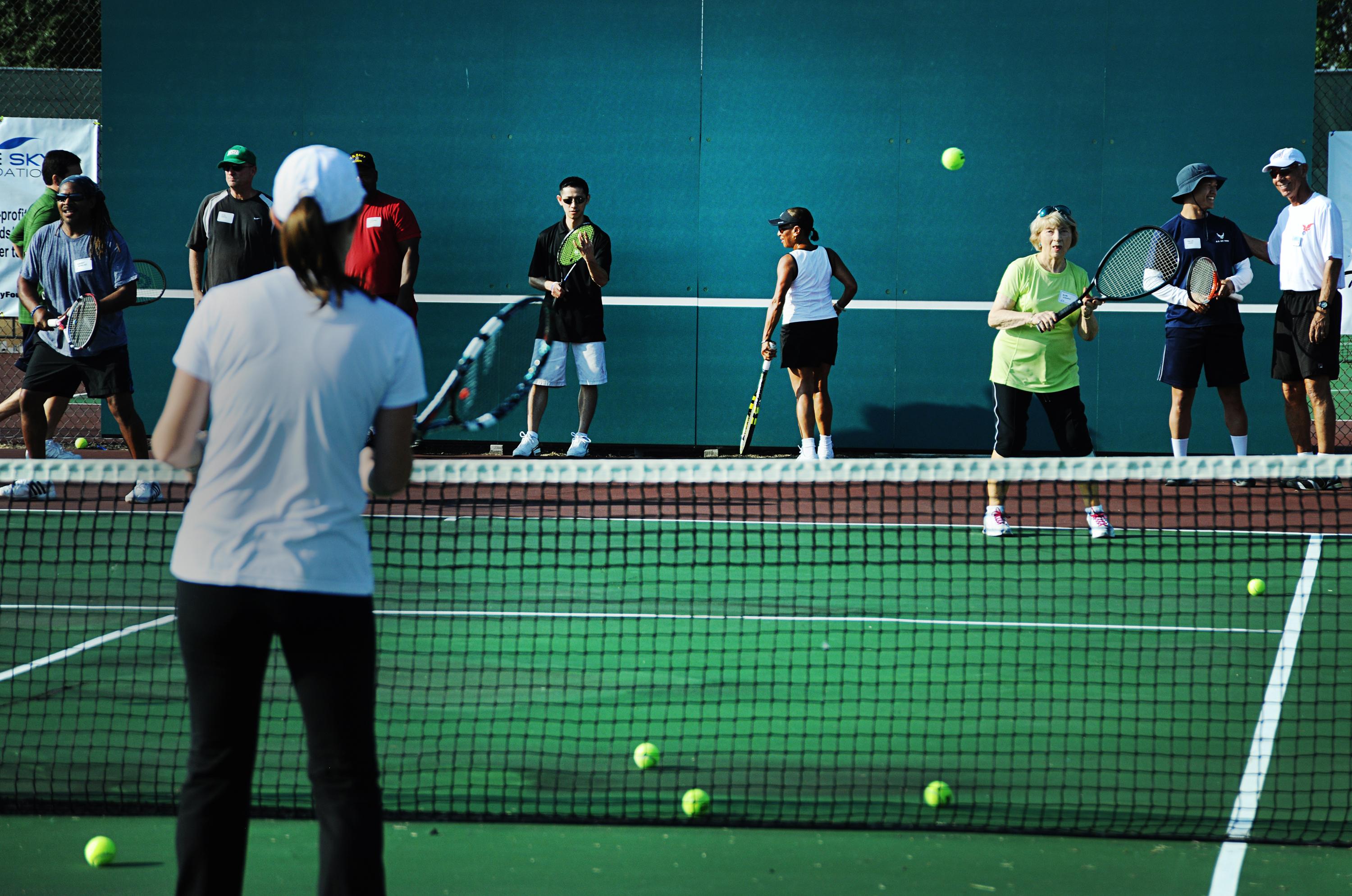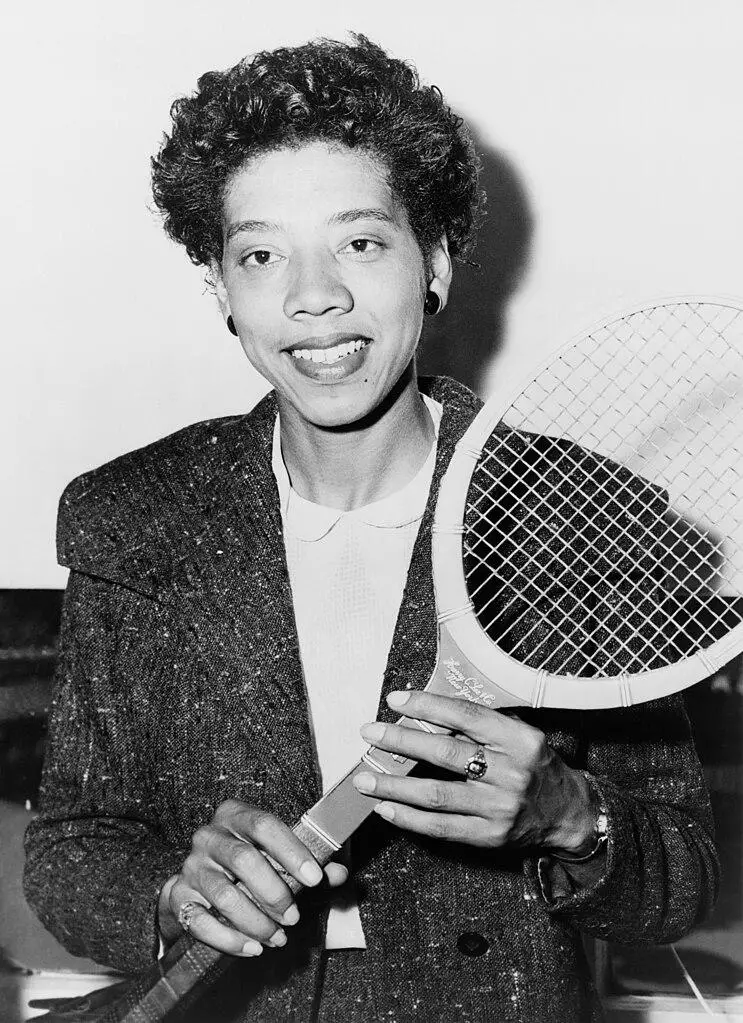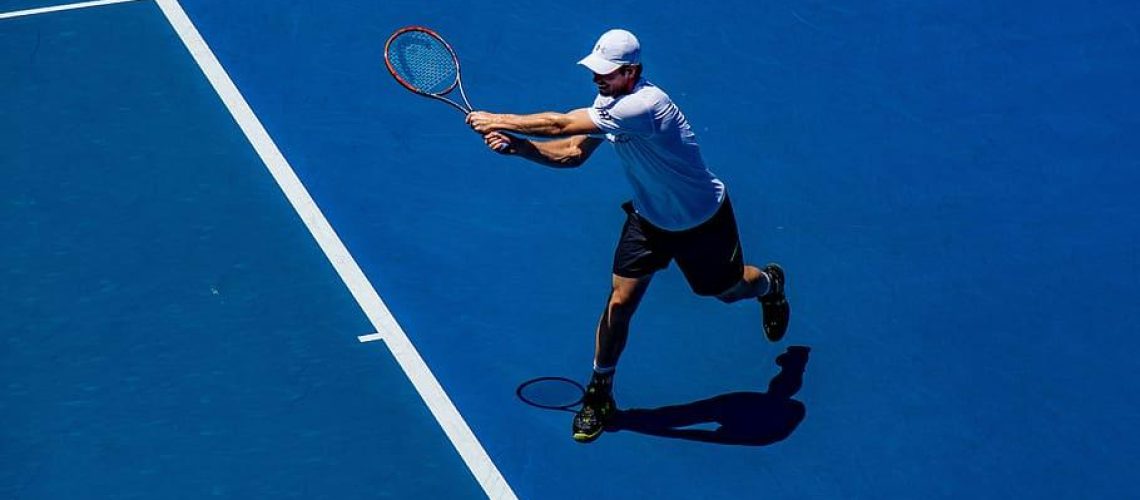We may earn money or products from the companies mentioned in this post.
Brief overview of tennis terminology

Tennis is a sport filled with its own unique set of terms and phrases that can sometimes leave newcomers scratching their heads From “deuce” to “love” to “break point,” understanding these tennis terms is essential for players and fans alike Whether you’re cheering on your favorite player or stepping onto the court yourself, having a grasp of these terms will enhance your enjoyment and knowledge of the game
Importance of understanding tennis terms for players and fans

Knowing the various tennis terms holds great importance for both players and fans For players, familiarizing themselves with these terms enables effective communication during matches, allowing them to strategize more efficiently with their coaches or doubles partners It also helps players comprehend the rules, scoring system, and tactics employed in different situations
For fans, understanding tennis terminology enhances their overall viewing experience by providing deeper insights into the game Being able to follow conversations between commentators, analysts, or fellow spectators adds an extra layer of engagement and appreciation for the sport
Introducing UTR as a significant term in tennis

One term that has gained prominence in recent years is UTR (Universal Tennis Rating). UTR is a rating system used to assess a player’s skill level based on their match results against other rated players It provides an objective measurement that allows players to compare their abilities across different levels of competition
UTR takes into account not only wins and losses but also factors such as opponent strength and margin of victory This comprehensive approach ensures a more accurate reflection of a player’s true ability rather than solely relying on rankings based on tournament results
The increasing reliance on UTR ratings has revolutionized how players are evaluated by college recruiters, coaches, and even professional scouts It allows for fairer assessments and opportunities for players who may not have access to high-level tournaments
Understanding the significance of UTR and its impact on player development and recruitment is crucial in today’s tennis landscape
Understanding UTR in Tennis

Definition of Universal Tennis Rating (UTR)
The Universal Tennis Rating (UTR) is a comprehensive rating system used to evaluate the skill level of tennis players It provides a standardized measure that allows players to compare their abilities with others, regardless of age, gender, or geographic location
Unlike other ranking systems that focus solely on tournament results or national rankings, UTR takes into account various factors such as the level of competition, margin of victory or defeat, and recent match performance This holistic approach provides a more accurate representation of a player’s skill level
The history and development of UTR
UTR was founded by Dave Howell and Mark Leschly with the vision of creating a universal language for tennis ratings They aimed to provide players across the globe with a reliable and transparent system that could facilitate fair competition and encourage player development
Since its inception, UTR has undergone significant evolution and witnessed impressive growth It has gained recognition from top tennis federations, college coaches, and professional players as an essential tool for player assessment and matchmaking
Calculation of a player’s UTR
A player’s UTR is calculated using various factors that influence their rating:
-
Level of competition:
The strength of opponents faced during matches plays a crucial role in determining a player’s rating Competing against higher-ranked opponents can lead to greater improvements in one’s UT -
Margin of victory or defeat:
The scoreline in each match impacts the calculation Winning convincingly against strong opponents can result in a higher increase in UTR compared to narrowly winning or losing -
Recent match performance:
UTR considers a player’s performance in their most recent matches more heavily This ensures that players’ ratings accurately reflect their current form and level of play
The range of UTR ratings varies from beginners (UTR 100) to elite professionals (UTR 1650). Each rating signifies a different skill level, allowing players and coaches to understand where they stand in the tennis hierarchy and set appropriate goals for improvement
Benefits and Applications of UTR in Tennis

Tennis is a sport that thrives on competition, skill, and fair play To ensure a level playing field for players across different age groups, genders, and skill levels, the Universal Tennis Rating (UTR) has emerged as a valuable tool Let’s explore the various benefits and applications of UTR in tennis
Fairness in evaluating players across different age groups, genders, and skill levels
One of the key advantages of using UTR is its ability to narrow the competitive gaps among players By taking into account factors such as age, gender, and skill level, UTR offers a more accurate evaluation of a player’s abilities This promotes fairness by ensuring that matches are balanced and competitive regardless of these variables
In addition to narrowing competitive gaps, UTR also promotes inclusivity within the sport With its comprehensive rating system based on performance rather than external factors like age or gender, UTR encourages equal opportunities for all players to showcase their skills on the court
Accuracy in determining tournament seeding
When it comes to organizing tournaments, accurate seeding plays a crucial role in creating engaging matches Utilizing UTR helps tournament organizers seed players more effectively based on their actual abilities rather than relying solely on subjective rankings or previous tournament performances
This accuracy in determining tournament seeding has a significant impact on maintaining competitive balance during tournaments It ensures that top-ranked players face off against each other at later stages while allowing lesser-known talents an opportunity to shine early on This dynamic mix of matchups keeps spectators engaged throughout the event
Player development insights
Beyond its impact on competitions, UTR also provides invaluable insights for player development By analyzing individual strengths and weaknesses through match results and performance data, coaches and players can identify areas for improvement and tailor their training accordingly
Furthermore, UTR enables the tracking of a player’s progress over time using historical data This allows individuals to measure their growth, set realistic goals, and make informed decisions about their tennis journey
In conclusion, the benefits and applications of UTR in tennis are vast From promoting fairness among players of different backgrounds to providing accurate tournament seeding and offering valuable insights for player development, UTR is revolutionizing the sport by bringing objectivity and inclusivity to the forefront
Addressing Common Questions about UTR in Tennis

When it comes to understanding your tennis skill level and tracking your progress, the Universal Tennis Rating (UTR) has become a popular tool among players But there are often questions and uncertainties surrounding this rating system Let’s dive into some common queries and shed light on how UTR works
Am I eligible to have a UTR?
If you’re an active tennis player, regardless of age or skill level, you are eligible to have a UT It doesn’t matter if you’re a beginner honing your skills or an experienced player competing in tournaments – everyone can benefit from having their performance measured through the UTR system
1 Requirements for obtaining a rating:
To obtain a UTR, you need to participate in at least three matches against players who already have established ratings These matches must be played within the last twelve months
2 Process for acquiring one’s first rating:
To acquire your first rating, simply create an account on the Universal Tennis website and start recording your match results Once you’ve played enough matches meeting the requirements mentioned above, you’ll receive your initial UT
How often is my UTR updated?
Your UTR is constantly evolving based on your recent match performances The more matches you play and record, the more accurate your rating will be
1 The role played by recent matches:
In determining your current skill level, recent matches hold greater weight compared to older ones This means that as time goes on, previous performances will have less impact on your current UT
2 Importance of staying active to maintain an accurate rating:
Staying active and participating in regular matches is crucial for maintaining an accurate UT By continuously playing, you give the rating system a clearer picture of your current abilities, helping it reflect your true level more accurately
Can I compare my UTR with professional players?
One of the fascinating aspects of UTR is that it allows you to compare your skill level with professional players
1 Using UTR to understand skill gaps between amateurs and professionals:
UTR provides a valuable tool for understanding the skill gaps between amateur players and professionals By comparing your rating to those of professional tennis players, you can gauge where you currently stand in relation to the highest levels of the sport
2 Inspiration and motivation derived from such comparisons:
Comparing your UTR with professional players can be inspiring and motivating, pushing you to work harder on improving your game It serves as a reminder that even though reaching their level may seem challenging, continuous growth and development are possible through dedicated practice
How do I interpret my UTR in terms of my tennis journey?
Your UTR can provide valuable insights into setting realistic goals and navigating your tennis journey effectively
1 Setting realistic goals based on one’s rating:
Your UTR can help you set achievable goals by giving you an idea of where you currently stand among players with similar ratings This allows you to focus on areas that need improvement or set targets for advancing within your rating range
2 Balancing ambition with self-awareness and patience:
While it’s natural to have ambitious aspirations, it’s important to balance them with self-awareness and patience Your UTR acts as a guide, helping you understand that progress takes time and consistent effort Embrace the journey and enjoy the process of improvement
Useful Links

Tennis Ratings and What They Mean
UTR Explained – YouTube
What Does UTR Mean in Tennis?
How UTR Works – FAQ’s
What does UTR stand for?
What’s your UTR Rating? | Competitive Play
What does UTR mean in TENNIS – Online Abbreviations
USTA NTRP Ratings: FAQs | National Tennis Leagues
UTR | Sherwood
Women’s Tennis Ratings and Recruiting Guidelines
Dear UTR: you might want to take a closer look at your algo
UTR – Definition by AcronymFinder
The Rating Calculator
UTR Pro Tennis Tour Code of Conduct 2023
UTR – What does UTR stand for? The Free Dictionary
Is Your UTR High Enough To Play College Tennis?
Universal Tennis Rating Sytem
Understanding UTR: What Does UTR Mean in Tennis?






